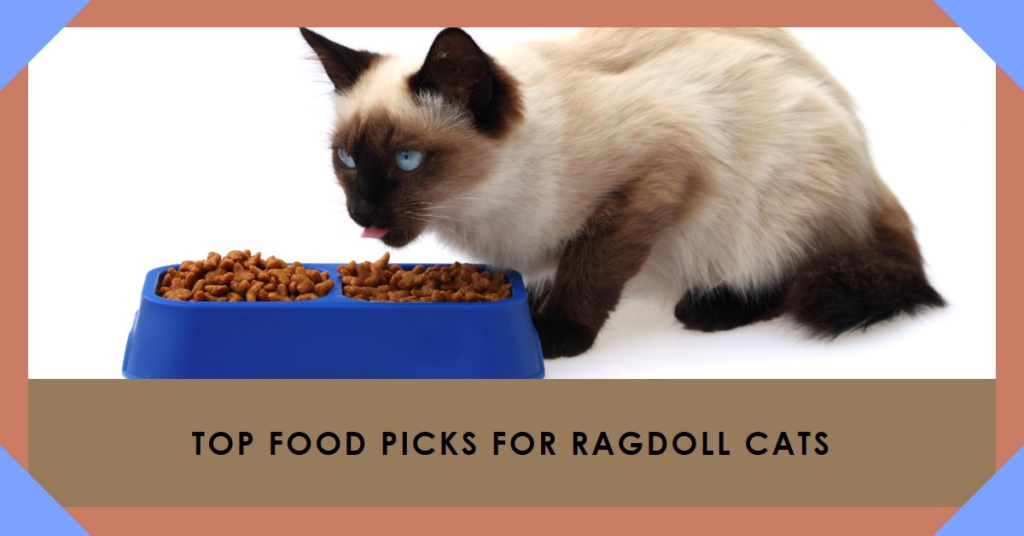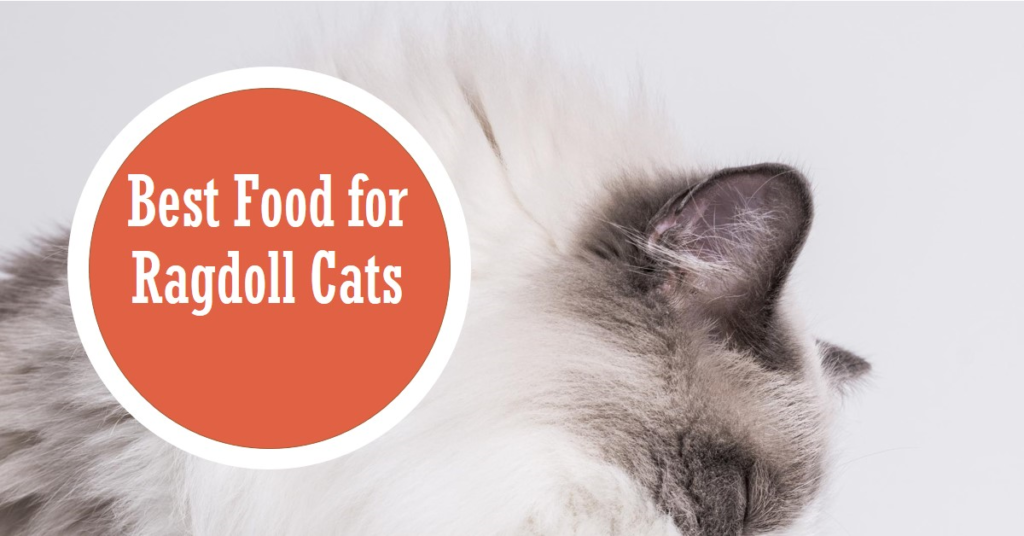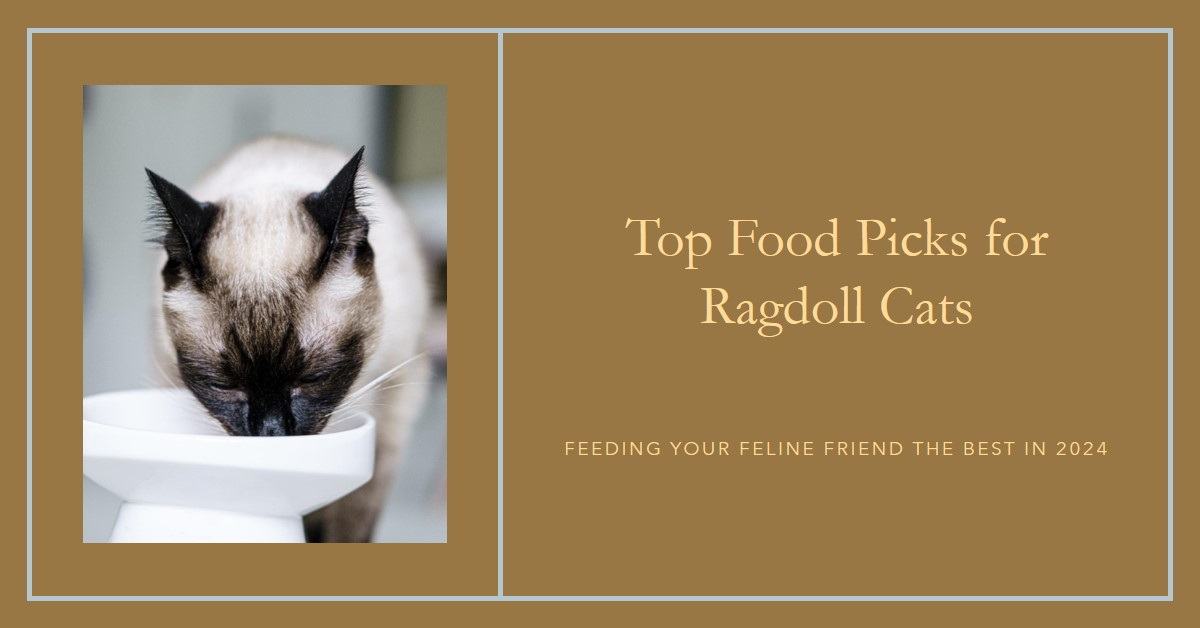Ragdoll cats are one of the most popular breeds of house cats due to their gentle and affectionate nature. However, as caring owners, we must feed them a nutritious diet to keep them healthy and happy.
So, what is the perfect diet for our fluffy furry friends? As caring pet owners, finding the best food to keep our ragdoll cats healthy and happy is essential. In this article, we will explore the nutritional needs of ragdoll cats and review some best food for ragdoll cats options that cater to these needs.
What should Ragdolls eat?
Ragdoll cats may look cute and fluffy, but they have strong, muscular bodies to support their large frames underneath. As such, Ragdolls need a diet high in protein to maintain their size and health. The best protein sources come from meat, which these cats naturally eat.
Nutrition experts recommend that Ragdolls get over half of their diet from meat-based animal proteins like fish, chicken, or beef. Their best food for ragdoll cats should also include around 20% healthy fats to supply energy. Carbohydrates from grains or vegetables should be limited to less than 3% as cats don’t need many carbs.
Wet canned food for ragdoll cats that contains whole or named meat ingredients like salmon or chicken is best for Ragdolls. This provides proteins, vitamins, and minerals in their natural forms. Cats can struggle to digest plant-based fillers or meals made from meat by-products. Their bodies are made to get protein from eating whole small animals or fish.
Ragdolls will stay fit when over 90% of their calories come from proteins and fats. Their large size requires these nutrients for energy, muscles, and organs. By closely checking labels for high-quality meats or fish as the main ingredients, owners can pick wet foods that match Ragdoll’s dietary profile, designed by nature. This ensures these charming pets remain happy and healthy.
| Nutrient | Calories per gram |
| Protein | 4 |
| Fat | 9 |
| Carbohydrate | 4 |
What this means for Ragdolls is simple: don’t feed them too many carbs. Carbohydrates from grains, potatoes, and sugar can easily cause weight gain and tummy troubles in these cats.
Their food is best if it does not contain lots of carbs from things like:
- Cereal grains – wheat, rice, corn and others
- Starchy vegetables – potatoes, peas and sweet potatoes
- Sugar – which some dry foods use to stick together
Ragdolls are built strong, but carbs are not part of their bodies’ needs. Their diet works best with protein and fats like meat, fish, and healthy fats. This keeps them at the correct weight and with happy tummies. By checking labels and choosing foods without high-carb fillers, owners can feed their furry friends precisely what nature intended.

Canned or dry food—what’s better for Ragdolls?
Ragdolls should avoid dry food for their health. As well as containing more carbs and ingredients that aren’t as natural, dry food is very low in moisture.
Ragdolls need around 60ml of water per kilogram of their weight each day to stay hydrated. Dry food alone does not provide this. This can lead to problems like constipation, tummy aches, bladder crystals, and kidney issues. These conditions are more common in cats that mostly eat dry food.
Most canned cat food is over 75% water. This means it keeps moisture in a cat’s body better than dry. Wet food also gives more of the good animal proteins a cat benefits from than biscuits.
Dry food indeed costs less to buy in bulk upfront. But in the long run, feeding wet food is better because your furry friend stays healthier with fewer vet bills! High-quality canned varieties with meat as the first ingredient ensure Ragdolls remain happy and problem-free for years.
How much should I feed my Ragdoll cat?
Although Ragdolls are large cats, be careful not to overfeed them. Ragdolls are quite relaxed pets that don’t play much actively despite their size.
They spend most of their days resting near their owners, only moving enough for a jump or two. This quiet life means Ragdolls need around 40-42 calories per kilogram of weight per day – less than cats that run and play more!
How much food a Ragdoll needs depends on its age and size. Here is a quick guide on the average calories needed daily for Ragdolls at different weights:
| Gender | Weight | Calories/day |
| Male Ragdoll | 5.5–9.5 kilos | 250–400 calories |
| Female Ragdoll | 3.7–6.8 kilos | 180–300 calories |
Figuring out food portions can be confusing since cat foods use many ingredients. Dry food normally has more calories than wet food as it contains carbohydrates and fats that add calories.
A cup of dry kibble averages between 300 to 450 calories. A regular-sized can of wet food (around 70-85g) is 80 to 120 calories, depending on the protein.
Most Ragdolls do well with two cans per day for their energy needs. Larger or more active cats might need an extra can.
If mixing foods, a balanced diet would include at least one wet meal and no more than 50g of dry food.
Feeding senior Ragdoll cats
- Senior Ragdolls 11 years and older tend to be very calm and often sleep. However, their calorie needs stay about the same.
- Once a Ragdoll reaches senior age, their metabolism slows, so portions should be reduced by 20-30% to match their smaller appetite.
- Owners may notice changes in eating habits if senior cats face common age-related health issues:
- Ragdolls are prone to thickening of the heart muscle (Hypertrophic cardiomyopathy). It can be prevented by giving taurine-rich meat like chicken and fish from a young age, which supports heart health.
- Diabetes is common in older or overweight cats that eat mostly dry food. It causes increased hunger, thirst, and urination. Managing it with medications and grain/sugar-free food is important.
- Tooth and gum problems lead to difficulty chewing in many senior cats. Providing soft, moist food helps if they struggle to eat.
- Gastric ulcers cause weight loss, vomiting, diarrhea, and lack of appetite. Requires urgent vet care to avoid worsening.
By making portion sizes and foods gentle on older bodies plus paying attention to signs of illness, caring owners can enhance every moment shared with their senior Ragdolls in their golden years. Seeking vet advice aids in customized plans.

Conclusion
Feeding ragdoll cats the best diet is essential to their health and happiness. Caring owners can select foods that meet feline nutritional standards by considering the quality of protein sources and nutritional completeness of various commercial options and home-prepared recipes.
With the right diet matched to life stage and individual needs, ragdolls thrive. Making mealtimes positive experiences with consistency and monitoring ensures these gorgeous pets stay well-nourished companions for years to come.
FAQs
1. What wet food texture is best for Ragdoll cats?
Chunky wet foods that require chewing are ideal for dental health, while gravy keeps cats hydrated.
2. Should grain-inclusive or grain-free food be chosen for ragdoll cats?
Either can work if the ingredients and quality are high. Limited whole grains add nutrients when included.
3. How many calories does a Ragdoll need?
Calorie needs vary by age, size, and activity levels, but average adults need 300-400 per day for health.
4. What brands are recommended?
Top brands like Hill’s, Royal Canin, and Wellness offer nutrition tailored to Ragdoll’s various needs at different stages.
5. What changes should be made at the older age of cats?
Senior Ragdolls need 20% fewer calories and any special dietary needs addressed if aging or sick. Soft foods aid chewing.
Also Read:


